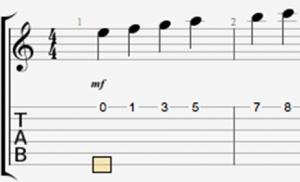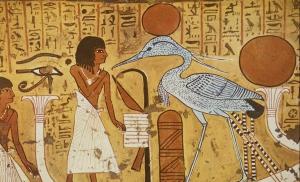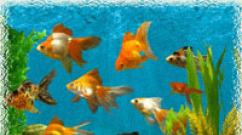Sea monsters, river monsters and other "legends" of the Water World.
The main human activity takes place on earth, so the water world is not fully explored. In ancient times, people were sure that many monsters live in the seas and oceans, and there is a lot of evidence describing encounters with such creatures.
Sea monsters and monsters of the deep oceans
Studies of water depths are still being carried out, for example, the Mariana Trench was explored (the most deep place on the planet), but the most terrible sea monsters described in ancient scriptures have not been discovered. Almost all peoples have ideas about the monsters that attacked the sailors. Until now, from time to time there are reports that people have seen huge snakes, octopuses and other creatures unknown to science.
hairy snake
According to historical chronicles, these monsters were discovered in sea depths ah around the 13th century. So far, scientists have not been able to confirm that giant sea snakes are real.
- A description of the appearance of these monsters can be found in the work of O. the Great "History of the northern peoples." The serpent is about 200 feet long and 20 feet wide. It lives in caves near Bergen. The body is covered with black scales, there are hanging hairs on the neck, and his eyes are red. He attacks cattle and ships.
- The last evidence of a meeting of a sea monster was about 150 years ago. The crew of the British ship, which followed the island of St. Helena, saw a huge reptile with a mane.
- The only known animal that fits the description is a belt fish that lives in tropical seas. The length of the caught specimen is approximately 11 m. The rays of its dorsal fin are long and form a “sultan” above the head, which from afar can be mistaken for hair.

hairy snake
sea monster kraken
A mythical sea creature that looks like a cephalopod is called the kraken. It was first described by Icelandic sailors, who claimed that it looked like an ordinary floating island. Descriptions of this monster of the deep sea are common and confirmed.
- A Norwegian ship in 1810 noticed in the water a huge creature similar to a jellyfish, whose diameter was about 70 m. There was a record of this meeting in the ship's log.
- The fact that giant sea monsters krakens exist was officially confirmed by science in the 19th century, since giant mollusks (something between an octopus and a squid) were found on the shore, similar in description to a kraken.
- The sailors announced a hunt for these creatures and specimens 8 and 20 meters long were caught. Some encounters with the kraken ended in a shipwreck and the death of the crew.
- There are several types of krakens, so it is believed that the monsters are 30-40 m long, and they have large suckers on their tentacles. They have no awns, but they have a brain, developed organs feelings and circulatory system. To protect themselves, they are able to release poison.

Grendel
In the English epic, the demons of darkness are called Grendel, and he is a giant troll who lived in Denmark. Describing the largest sea monsters, it is often included in the list, and it lives in underwater caves.
- He hated people and sowed panic among the people. His image combines different hypostases of evil.
- In Germanic mythology, a sea monster with a huge mouth was considered a creature that was rejected by people. Grendel was a person who committed a crime and was expelled from society.
- Movies and cartoons were made about this monster.

Grendel
Sea monster Leviathan
One of the most famous monsters, described in Old Testament and other Christian sources. The Lord created each creature in pairs, but there were animals in a single kind and these are different sea monsters, which they refer to.
- The creature is huge and has two jaws. His body is covered in scales. He has the ability to breathe fire and thereby evaporate the seas.
- In later sources, some mythical sea monsters were justified, so Leviathan began to be presented as a symbol of the unlimited power of the Lord.
- There is a mention of this creature in stories different peoples. Scientists are sure that Leviathan was simply confused with different sea animals.

Leviathan
Monster Scylla
IN Greek mythology Scylla is considered a unique creature that lived not far from another monster, Charybdis. They were considered very dangerous and voracious. According to existing versions, Scylla was the object of love of many gods.
- The sea monster is a snake with six heads that has kept upper part female body. Under the water were tentacles ending in the heads of dogs.
- With her beauty, she attracted sailors and could bite a galley in half with her head.
- According to myths, she lived in the Strait of Messina. Odysseus survived the meeting with her.

sea serpent
by the most famous monster, which had a snake body, is Ermungandr - a mythical Scandinavian creature. He is considered the middle son of Loki and Angrboda. The serpent was of enormous size, and he was able to encircle the Earth and cling to his own tail, for which he was called the "World Serpent". There are three myths about sea monsters, which describe the meeting of Thor and Yermungandr.
- The first time Thor met a snake in the form of a giant cat, and he was given the task of lifting it. He only managed to get the animal to raise one paw.
- Another myth describes how Thor went fishing with the giant Gimir and caught the bull Yermungand on his head. It is believed that he managed to crush his head with his hammer, but did not kill him.
- It is believed that their last meeting will take place on the day when the world ends and all sea monsters come to the surface. Yermungandr will poison the sky, for which Thor will cut off his head, but the stream of poison will kill him.

sea serpent
sea monk
According to existing information, the sea monk is a large humanoid creature whose hands look like flippers and legs fish tail. Its body is covered with scales, and there is no hair on the crown, but there is something similar to tonsures, hence the name of this creature.
- Many scary sea monsters live in water bodies. Northern Europe, and the sea monk is no exception. Information about him appeared in the Middle Ages.
- These creatures frolicked on the shores, thereby captivating the sailors, and when they managed to get as close as possible to them, they dragged the victims to the bottom of the sea.
- The first mentions date back to the 14th century. An unusual creature with a tonsure on its head was washed ashore in Denmark in 1546.
- Scientists believe that the sea monk is a legend that arose due to a misperception.

sea monk
sea monster fish
To date, a little more than 5% of the world's oceans have been explored, but this was enough to discover terrible aquatic creatures.

The depths of the modern World Ocean are a terrible place, teeming with barracudas, sharks, giant squids and the monster Cthulhu. But whatever creatures we find in sea waters today, none of them compare to the gigantic, fearsome monsters that infested Earth's oceans in the distant past: the gigantic sea lizards, huge sharks and even super predatory whales. For most of these monsters, humans would be nothing more than a snack.
So, before you - the ten most terrible prehistoric underwater monsters that have ever lived in the ocean.
10. Megalodon (Carcharodon megalodon)
This is possibly the most famous underwater prehistoric creature on this list. It's hard to imagine a shark the size of a 10-16 meter truck, but that's exactly what these 40-ton monsters were. Also, entertainment/educational resources like the Discovery Channel love to talk about creatures that look like monsters from horror movies.
Despite the popular belief that megalodons existed at the same time as dinosaurs, they actually lived 25-1.5 million years ago, which means that, at best, they diverged in time from the last dinosaur by 40 million years. On the other hand, this means that they could have existed even when the first people had already appeared on Earth. Ouch! 
Megalodons lived in warm oceans that were all over the globe until the last ice age at the beginning of the Pleistocene, as a result of which, probably, these creatures lost their food and stopped reproducing. Sometimes it seems that nature is covering us.
9. Liopleurodon (Liopleurodon)
If the movie "Jurassic Park" had an underwater scene in which they would show as many animals as possible that lived on our planet at that time, then Liopleurodons would most likely be present in it.
Although the actual length of these animals is still disputed by scientists (some of them claim that this monster was over 15 meters), most agree that they were almost 6 meters long, and about 1.2 meters of them - the head with sharp teeth.
If the mouth of the "smaller" supposed monster is already large enough to eat a whole person, one can imagine the huge mouth of the larger one. 
Scientists studied the structure of the flippers of these creatures using small floating robots and found that, although they were not very fast, they were incredibly flexible. In addition, they could also make short, quick and sudden attacks like crocodiles, which does not make them any less intimidating.
8. Basilosaurus (Basilosaurus)
Despite its name and appearance, this is actually not a reptile, but a whale (and not the scariest one on this list). Basilosaurs are the predatory ancestors of modern whales, the length of which reached from 15 to 26 meters!
They are described as the whales most closely related to snakes due to their length and ability to squirm. Imagine swimming in the ocean with an alligator whale that is over 24 meters long! Now, having imagined this, you are unlikely to want to swim in the sea again.
Physical evidence suggests that basilosaurs had neither the cognitive abilities of modern whales nor the ability to echolocate: they could only move in two directions (without swimming in and without jumping out of the water). So these huge whales were dumber than a bag of prehistoric axes, and they would never have been able to chase a man either in water or on land.
7. Jaekelopterus rhenaniae 
Agree, there can be nothing comforting in the phrase "sea scorpion", so this creature quite rightly seems creepy and terrible to you. It was one of the two largest arthropods to ever live on Earth, reaching over 2 meters in length as an armored pincer terror.
Most people are already beginning to get scared at the thought of centimeter ants and meter spiders, so it's easy to imagine the scream that would come from a person who accidentally stumbled upon such a creature, if they still lived. 
Good news that sea scorpions (shell scorpions) died out even before the dinosaurs, having been destroyed during the mass Permian extinction (as a result of which 90% of the aquatic and terrestrial animal species that lived on the planet).
Partly managed to survive only horseshoe crabs, which pose a much smaller threat than ordinary crabs. There is no evidence that sea scorpions were venomous, but their tail structure is similar to that of modern scorpions, suggesting that they may well have been venomous.
6. Mauisaurus, a giant genus of the elasmosaur family of the plesiosaur order (Mauisaurus)
The Mauisaurs were named after Maui, the Maori demigod who is said to have pulled the New Zealand Islands from the bottom of the sea with a fishhook, so you guessed these creatures were incredibly huge.
The neck of Mauisaurus reached 15 meters in length: this is the longest neck in proportion to the body of all animals that have ever lived on the planet, with the exception of some species of sauropods (sauropods).
The total body length of this monster was almost 20 meters, and this absurdly long neck had many vertebrae, which suggests that it was flexible. Imagine a snake with the body of a turtle without a shell, and you will have a rough idea of what this giant looked like. 
Mauisaurs lived during the Cretaceous period, which means that creatures that jumped into the water to avoid meeting with velociraptors and tyrannosaurs had to confront them; The competition for the title of the best has long ended.
As far as science knows, Mauisaurs were endemic to New Zealand, which suggests that the area that once became Australia and its neighbors has always been a land of horror.
5. Dunkleosteus
Dunkleostei were 9-meter carnivorous "tanks". Instead of teeth, they had bone plates, like turtles. It is estimated that the pressure of their jaws was 55 MPa, putting them on a par with crocodiles and tyrannosaurs in terms of the owners of the most powerful jaws in history.
They are also believed to have powerful jaw musculature that could open their mouths in 1/50th of a second, meaning that the stream of water literally sucked their prey inward. 
The "teeth" plates changed as the fish's hard, tough jaw evolved into segments that were easier for it to hold on to its prey and were more effective at crushing the shells of other armored fish. In the "arms race" that was the prehistoric ocean, the Dunkleosteus was a predatory supertank.
4. Kronosaurus (Kronosaurus)
Kronosaurus is a short-necked pliosaurus whose length, like Liopleurodon, is a subject of debate in the scientific world. The length of their torso was "only" 9 meters, and the most long tooth in their powerful mouth was 28 centimeters long. That is why these creatures were named after Kronos, the king of the ancient Greek titans. 
Guess where kronosaurs lived? If you said that in Australia, then you are attentive (and right). The head of this monster was up to 3 meters in length. They could eat modern man whole, and they would still have room for half of the other.
In addition, it is assumed that, since their swimming membranes are very similar in structure to those of modern sea turtles, they could crawl out onto land to lay their eggs. You can be sure that no one dared to dig up the nests of these animals to feast on their eggs.
3. Helicoprion (Helicoprion)
These sharks could grow up to 5 meters in length, and their lower jaw was shaped like a spiral. It's like a cross between a buzz saw and a shark, and when a super predator pairs up with a powerful power tool, the world shakes in fear. 
The teeth of the Helicoprion were serrated (sorry for the tautology), which suggests that they were definitely predators. However, there is controversy as to whether their teeth were in front of the mouth, as shown in the picture, or slightly further back, which would suggest a softer diet, such as eating jellyfish.
However it was set up, it clearly worked. Helicoprions survived the Permian mass extinction, which means that these creatures may have been smart enough to create "bomb shelters" for themselves. Or perhaps they simply lived at great depths.
2. Leviathan Melville (Livyatan melvillei)
Remember we mentioned super predatory whales? This is what he is. Imagine a cross between a killer whale and a sperm whale. Melvilla's Leviathan is a whale that ate other whales!
Its teeth were larger than any other animal that has ever used them for eating (and although elephants have larger tusks, they really only look impressive, and with their help, elephants only break things, but do not eat), reaching an incredible 36 centimeters.
They lived in the same oceans and ate the same food as megalodons, so these whales really had to compete with the largest predatory sharks in history. 
Not to mention their head, which was 3 meters long and had the same echolocation "equipment" as modern toothed whales, which made them more effective at muddy water.
In case it's not obvious, this animal was named after Leviathan, the giant Biblical sea monster, and Herman Melville, author of Moby Dick, or the White Whale. And if big White whale in the novel was one of Melville's leviathans, he would have eaten the Pequod whaling ship with everyone on board in one crunch.
1. Himantura polylepis stingray
What grows up to 5 meters in diameter, has a 25 cm venomous spike on its tail, and is so strong that it can capsize a boat full of people? In this case, it is a prehistoric superfish that still lurks in fresh and salty waters from the Mekong River to northern Australia. giant stingrays appeared there a few million years after the dinosaurs died out, and proved the success of their structure, like the sharks from which they descended. 
Giant stingrays use their time-tested build and somehow managed to survive several ice ages and even the cataclysmic Toba eruption some 75,000 years ago during the last ice age.
These creatures are notorious for being able to pierce a limb (bone) with their neurotoxin-coated spike. The good news is that, for all that, these prehistoric marine
The ocean depths have long been famous for their bizarre inhabitants, who inspired indescribable horror on the ancients. Living on the planet at different times, the terrible creatures of the oceans and seas were overgrown with myths and legends. Let's get to know them better.
prehistoric sea monsters
Prehistoric times abound with tales of incredible aquatic creatures. We have compiled a rating of the 10 most dangerous inhabitants of that period.
Leviathan
The top 10 prehistoric monsters are opened by the sea serpent Leviathan, the first mention of which can be found in the Old Testament. The name of this inhabitant of the deep sea is translated as "a fish twisted into a spiral."

According to the Psalms of David, Leviathan is a giant monster with a powerful neck, terrible double jaws, sharp teeth and red eyes. The body of a mythical creature is covered with tight-fitting scales, and steam escapes from the nostrils. Rising above the waves ocean depths, Leviathan fascinated sailors with its unusual beauty and terrifying outlines.
On a note! Ancient people called Leviathan the Prince of Darkness. They areit was believed that a serpent breathing hot fire could vaporize the oceans.
For the first time, they started talking about the sea serpent in the Ancient East. In those distant times, sailors who returned from distant voyages told scary stories about a huge monster, the size of which boggled the imagination. It was rumored that this monster could turn an entire ship into chips with one movement, so it was simply impossible to survive there.

As for biblical legends, the personality of Leviathan is described ambiguously in them. In some sources, this is a powerful monster waging a fight with God. In others - an incomprehensible being, inaccessible to understanding by mere mortals.
kraken
The rating of the most terrible creatures of the oceans and seas continues giant octopus Kraken, who lived off the coast of Norway and Iceland. The dimensions of the Scandinavian monster, covered with terrible legends, amaze the imagination. A Danish naturalist of the 17th century compared the Kraken to an island. Due to its gigantic volumes, sailors often mistook it for a piece of land rising in the middle of the ocean. This mistake became fatal for many.

Ancient sailors were afraid of the huge tentacles that rose above the surface of the expanses of water, entangled the masts of ships and immediately dragged them to the bottom. And eyewitnesses claimed that the Kraken could create dangerous whirlpools, into which everything that was not lucky enough to be in the path of this giant monster was drawn. Even the big ones were not immune from death. warships. So, Pliny the Younger was sure that it was the rakens that stuck around the ships of Mark Antony and Cleopatra, because of which they were defeated.

Disputes about the existence of a giant squid have not subsided until our time. Cryptozoologists who study the mysterious inhabitants of the ocean depths claim that such monsters were seen in the mystical area. bermuda triangle. In their opinion, it is the gigantic Kraken that is main reason mysterious incidents associated with this area. To find out what a huge squid looks like, just visit either the London Museum or the Melbourne Aquarium. The first one offers to admire the 9th sample placed in a container with formalin. The second is the 7th kraken frozen in a block of ice.
Interesting! I believed in the existence of this giant andCarl Linnaeus. He even introduced the kraken into the classification system of nature, calling it cephalopod, but then he himself deleted it from there.
sea monk
The world of sea monsters cannot do without a sea monk, a humanoid giant whose hands look like flippers and whose legs look like a fish tail. The body of the monster was covered with shiny scales, and the head was decorated with a halo, similar to the tonsure of ancient monks. It is this similarity that explains the name of this terrible creature.

The first stories about sea monks appeared in the Middle Ages. The legends of the time say that these creatures often came ashore to perform their infamous dance. Their movements were so beautiful and mesmerizing that people lost all vigilance. As soon as someone especially careless approached close enough, sea monsters immediately grabbed him and ate him in front of the audience.
Interesting! There is an opinion that sea monks actually existed. Proof of this is an unusual creature with a tonsure on its head, washed ashore in Denmark in 1546. True, a few years ago, scientists from Copenhagen stated that it was nothing more than a cuttlefish with 10 tentacles.
lernaean hydra

The Lernaean Hydra, whose name means "water", is also one of the most feared monsters in the ocean. About it mythical creature, generated ancient greek gods Echida and Typhon, there were many different legends. For example, Hesiod, who mentioned the hydra in his Theogony, describes it as a huge animal with long tail and six heads. It is impossible to kill him - as soon as one head is cut off, a second one immediately appears in its place. Ancient legends say that the brothers of the Lernaean Hydra were Cerberus and Orff, angry dogs guarding the gates to the kingdom of Hades, and the nurse was the goddess Hera, who planned to kill Hercules himself with the help of this monster.
Interesting! Despite the terrifying appearance and seeming immortality, the hydra was slain. The legend tells that one of the nephews of Hercules figured out how to defeat this terrible monster. The young man noticed that if the severed heads of the hydra are burned with fire, new ones no longer appear in their place. In such a simple way, one of the most famous sea monsters was struck.
Liopleurodon aquatic dinosaur

The terrible liopleurodon continues the list of terrible inhabitants of the water depths. A huge creature lived on the territory of modern Central America and Europe back in the days jurassic. Liopleurodon is still considered one of the largest sea monsters in the world. The body length of this predator exceeds 25 meters, body weight reached 160 tons. More than a third of the entire length was occupied by a head on a large and powerful neck. The picture was complemented by wide flippers up to 3 meters long and a huge mouth armed with 30-cm teeth.
According to the data from the bible, this prehistoric creature terrified the entire district. He was feared and hated, because the one who managed to meet on the way of the Liopleurodon never again appeared among the living.
Interesting!Liopleurodoncould not go ashore for hours. Knowing how to hold his breath for a long time, he dived to the depths and waited for his prey in ambush.
Scylla
Not all prehistoric creatures living at the bottom of the ocean were scary "from the cradle." The next heroine of the rating of the most unusual monsters of the deep sea was born a beautiful nymph. Scylla, and we are talking about her, was the daughter of Hecate, ancient greek goddess. Being a rather proud and impregnable girl, she rejected all her admirers, including the god Glaucus. The master of the sea turned to the evil sorceress Circe for advice. But the witch in love took revenge on both of them by turning Scylla into a mutant. The former beauty has turned into a terrible six-headed dog with 12 legs and teeth in 3 rows, lying in wait for sailors on the Skillian rock in the Gulf of Sicily.
Interesting! Ancient Greek legends say that only Odysseus and his Argonauts managed to get past Scylla. A little trick helped him in this. Odysseus simply hid from his team that a terrible monster awaits them ahead. Fearing nothing, the Argonauts sailed past Scylla, remaining safe and sound.
hippocampus
Freaks of the oceans can hardly do without this creature. Indeed, it would be difficult to imagine a more ugly creature! The hippocampus is an animal with the body of a horse, the tail of a snake or fish, and webbed feet instead of front hooves. The body of the “water horse”, which is how the name of this strange inhabitant of the deep sea is translated, is covered with scales of various sizes. According to some sources, the hippocampus breathes with the help of lungs, according to others - with the help of gills.

Water horses can be seen in ancient pictures depicting the walks of tritons and nereids, the main sea deities. There are water horses in the poetry of Homer, who calls them one of the symbols of Poseidon. In mosaic art, hippocampuses were present as hybrid animals with appendages and a green, scaly mane.
Interesting!In ancient times, they were considered the first form of seahorse.
Megalodon
Shark megalodon is considered one of the most terrible inhabitants of the marine world. The first find that proved the existence of this monster was huge teeth. True, for many years scientists believed that these fossilized remains belong to dragons or snakes. And only in 1667, the Danish researcher N. Stensen managed to prove that we are talking about megalodon.

For better or worse, this dangerous animal did not survive to this day. Moreover, no one has ever managed to find the complete skeleton of a huge shark. Like all representatives of this class, it consists of cartilage, which, after the death of the giant, simply disappeared into the abyss.
Of course, the horror that these prehistoric creatures inspired has nothing to do with the divine beliefs of ancient people. Huge 20 meter sharks with a huge mouth and sharp teeth were quite real, but no less scary for that.
Interesting! The age of the remains that lived in the ocean is about 2.8 million years. This means that sharks cut through the ocean during the periodCenozoic era.
Monster Nessie
The Loch Ness monster can be safely called the most popular monster of the deep oceans. A hundred films have been made about him, a lot of books have been written, dozens of legends, epics and legends have been retold. But did it really exist? The answer to this question will remain a mystery.

The first mentions of loch ness monster dated another 5 st. BC e. The Celts claimed that these underwater creatures were reptiles with a long and thick tail, capable of breaking the largest ship. More modern photos Nessie, dated 1933. Another boom associated with the name of this creature fell at the end of the 80s of the last century, when its outlines were seen not only in the lake of the same name, but also in the Pacific Ocean. New information about the Loch Ness monster appeared quite recently - in September 2016. Then the photographer Ian Bremner managed to film how a 2-meter snake cuts through the surface of the water at breakneck speed.
Interesting! Not so long ago, from a collision with Nessie, he suffered deep-sea vehicle"Hyfish". Having plunged to a depth of 7 km, he failed to rise to the surface. Turning on the thermal imager, the hydronauts saw that a terrible creature had attached itself to the body of the apparatus. They do not know the name of this monster, but they assure that it looks like a huge lizard.
Mokele-mbembe
Mentions of the monsters of the oceans are also found in Chinese legends. So, in one of the manuscripts dated to the 12th century, one can find a story about a terrible water dragon. The author of the text claims that he saw with his own eyes the skeleton of this monster in the court pantry. Based on these data, it can be concluded that the mokele-mbembe dragon was a creature with a large body, short thick legs, a long tail and horns.

Legends of a terrible monster have survived in the mythology of many Central African tribes. So, for example, pygmies point out that mokele-mbembe is a cross between an elephant and a dragon. The inhabitants of Zambia represent him in the form of a "devourer of hippos", a huge creature that looks like a dinosaur or lizard.
Interesting! The famous hunter Robert Jordan assures that he was lucky to see the mokele-mbembe with his own eyes. In his description, the dragon resembles a terrible hippopotamus with the head of a crocodile. Curiously, Jordan's guides confirm every word of the hunter.
Real sea monsters
You will not believe it, but water monsters can be found in our time. Here is a list of the most popular and terrible sea monsters.
Pike blenny

pike blennies, so named because of their thick, wrinkled cheeks, inhabit the waters Pacific Ocean. They have a not too long (only about 30 cm), smooth and almost scaleless body. Lying at a depth of up to 70 meters, this fish is practically no different from its counterparts. But as soon as she opens her mouth, she turns into a frightening monster, ready to swallow everything that comes her way. The fish are really very aggressive - in certain situations they can even attack divers.
Interesting! Pike blennies use their huge mouths when they collide with fellow tribesmen when fighting for water area. During the clash, the monsters try to open their mouths as wide as possible - whoever turns out to be larger, he won the battle. This makes it look like they are kissing.
moray eel

These bewitching monsters are considered one of the most dangerous inhabitants of the modern sea depths. Biologists distinguish several types of moray eels, differing from each other in size and color. If small individuals barely grow to 15 cm, then the length of the largest moray eels reaches 2-3 meters with a weight of 50 kg.

The skin of these creatures does not have scales. Instead, the body is covered with a sticky, poisonous mucus that serves as a defense against bacteria and other predators. When in contact with human body this substance causes severe burns, which are often fatal.
Interesting! Danger for a person is also large teeth that can tear the flesh into many small shreds.
Meshkort

Meshkor is considered the only known to science representative of his kind. Its body length is about 2 meters, the popular habitat is a depth of 2-5 km.

Home characteristic feature sackshort is a huge flexible mouth with inwardly curved teeth. Due to the absence of some bones in the skull, these creatures can open their mouths almost 180 degrees.
Interesting! Since on seabed food is not enough, the fish eat up for the future. At the same time, the volume that she swallows significantly exceeds her own weight.
Goonch fish
This terrible creature lives in the Kali River, which flows between India and Nepal. Goonch is terribly fond of human meat, which is his main menu. Due to its impressive size (more than 140 kg), the fish is able to attack both in a secluded place and in front of the crowd.
Interesting! Craving gunch to human flesh provoked by the people themselves, who have long used the waters of Kali to bury the dead.
Now you know what the most terrible sea creatures are and where they live. One can only hope that this rating will not soon be replenished with new terrible individuals.
The modern ocean is home to many incredible creatures, many of which we have no idea. You never know what lies there - in the dark cold depths. However, none of them can be compared with the ancient monsters that dominated the world's oceans millions of years ago.
In this article, we will tell you about pangolins, carnivorous fish and predatory whales that terrorized marine life in prehistoric times.
1. Giant stingray
What is it: 5 meters in diameter, a 25-meter-long poisonous spike on the tail and strength enough to pull a boat full of people? In this case, it is an eerie-looking flat sea creature that has lived in salt waters from the Mekong River all the way to Australia since prehistoric times to this day.

Stingrays have lived quietly in the waters of Australia since the extinction of dinosaurs and the huge predatory sharks from which they originated. They originated in prehistoric times, but they managed to survive all the ice ages, and even the terrible eruption of the Toba volcano. They are very dangerous and should not be approached. Even if you think that they are not around, you may be wrong - they are excellent at camouflage.
They are dangerous because they can attack you with a poisonous neurotoxin spike or simply damage their vital organs. The upside is that these prehistoric monsters aren't as aggressive and won't try to eat you.
2. Leviathan Melville (Livyatan melvillei)

Earlier in this article we already talked about predatory whales. Melville's Leviathan is the most intimidating of them all. Imagine a huge orca-sperm whale hybrid. This monster was not just carnivorous - it killed and ate other whales. It had the largest teeth of any animal known to us.
Their length sometimes reached 37 centimeters! They lived in the same oceans at the same time and ate the same food as megalodons, thus competing with the largest predatory shark of the time.

Their huge head was equipped with the same sonar devices as modern whales, making them more successful in murky waters. If it was not clear to someone from the very beginning, this animal was named after Leviathan - a giant sea monster from the Bible and Herman Melville, who wrote the famous "Moby Dick". If Moby Dick were one of the Leviathans, he would certainly eat the Pequod with his entire team.
3. Helicoprion (Helicoprion)

This shark, 4.5 meters long, had a serrated lower jaw lined with teeth. She looked like a hybrid shark with a buzz saw, and everyone knows that when dangerous power tools become part of a predator that is at the top of the food chain, the whole world trembles.

The teeth of the helicoprion were serrated, which clearly indicates the carnivorous nature of this sea monster, but scientists still do not know for sure whether the jaw was pushed forward as in the photo, or slightly pushed deep into the mouth.
These creatures survived the Triassic mass extinction, which could indicate their high intelligence, but their habitation could also be the reason.
4. Kronosaurus (Kronosaurus)

Kronosaurus is another short-necked lizard that looks like a Liopleurosaurus. Remarkably, its true length is also known only approximately. It is believed that it reached up to 10 meters, and its teeth reached up to 30 cm in length. That is why it was named after Kronos, the king of the ancient Greek titans.
Now guess where this monster lived. If your assumption was related to Australia, then you are absolutely right. The head of the Kronosaurus was about 3 meters long and it was able to swallow an entire adult human. In addition, after that, there was room inside the animal for another half.

Also, due to the fact that the flippers of kronosaurs were similar in structure to the flippers of a turtle, scientists concluded that they were very distantly related and assumed that kronosaurs also got out on land to lay their eggs. In any case, we can be sure that no one dared to ruin the nests of these sea monsters.
5. Dunkleosteus

Dunkleosteus was a ten-meter predatory monster. Huge sharks lived much longer than dunkleostei, but this did not mean that they were the best predators. Instead of teeth, Dunkleosteus had bony growths, like some species of modern turtles. Scientists have calculated that their bite force was 1500 kilograms per square centimeter, which put them on a par with crocodiles and tyrannosaurs and made them one of the creatures with the strongest bite.

Based on the facts about their jaw muscles, scientists concluded that the Dunkleosteus could open its mouth in one fiftieth of a second, absorbing everything in its path. As the fish matured, the single bony tooth plate was replaced by a segmented one, which made it easier to get food and bite through the thick shells of other fish. In the arms race called the prehistoric ocean, the Dunkleosteus was a real well-armoured, heavy tank.
6. Mauisaurus (Mauisaurus haasti)

Mauisaurus was named after ancient god Maori Maui, who, according to legend, pulled the skeleton of New Zealand from the bottom of the ocean with a hook, so that only by the name you can understand that this animal was huge. The neck of the Mauisaurus was about 15 meters long, which is quite a lot compared to its total length of 20 meters.
His incredible neck had many vertebrae, which gave it a special flexibility. Imagine a turtle without a shell with a surprisingly long neck - this is what this terrible creature looked like.

He lived during Cretaceous, which meant that the unfortunate creatures that jumped into the water to escape the velociraptors and tyrannosaurs were forced to face these sea monsters. The habitats of the Mauisaurs were limited to the waters of New Zealand, which indicated that all the inhabitants were in danger.
7. Shellfish (Jaekelopterus rhenaniae)

Not surprisingly, the words "sea scorpion" evoke only negative emotions, but this representative of the list was the most creepy of them. Jaekelopterus rhenaniae is special kind crustaceans, which was the largest and most fearsome arthropod of the time: 2.5 meters of pure clawed horror under the shell.
Many of us are terrified of small ants or large spiders, but imagine the full range of fear experienced by a person who would not be lucky enough to meet this sea monster.

On the other hand, these creepy creatures became extinct even before the event that killed all dinosaurs and 90% of life on Earth. Only some types of crabs survived, which are not so scary. There is no evidence that the ancient sea scorpions were venomous, but based on the structure of their tail, it can be concluded that this may indeed have been the case.
8. Basilosaurus (Basilosaurus)

Despite the name and appearance, they are not reptiles, as it might seem at first glance. In fact, these are real whales (and not the most intimidating in this squeak!). Basilosaurus were the predatory ancestors of modern whales and ranged from 15 to 25 meters in length. It is described as a whale, somewhat resembling a snake due to its length and ability to squirm.
It is hard to imagine that, while swimming in the ocean, one could stumble upon a huge creature that looked like a snake, a whale and a crocodile at the same time 20 meters long. The fear of the ocean would stick with you for a long time.

Physical evidence suggests that basilosaurs did not have the same cognitive abilities as modern whales. In addition, they did not have the ability to echolocate and could only move in two dimensions (which means that they could not actively dive and dive on great depth). Thus, this terrible predator was as stupid as a bag of prehistoric tools and would not be able to follow you if you dived or made landfall.
9. Liopleurodon (Liopleurodon)

If there was a water scene in the Jurassic Park movie that included several sea monsters of the time, the Liopleurodon would definitely appear in it. Despite the fact that scientists argue about the real length of this animal (some claim that it reached 15 meters), most of them agree that it was about 6 meters, with the pointed head of Liopleurodon occupying a fifth of the length.
Many people think that 6 meters is not so much, but the smallest representative of these monsters is able to swallow an adult. Scientists have recreated a model of Liopleurodon's fins and tested them.

In the course of their research, they found that these prehistoric animals were not so fast, but they were agile. They were also capable of making short, quick and sharp attacks similar to those of modern crocodiles, which makes them even more intimidating.
10. Megalodon (Megalodon)

Megalodon may be the most famous creature on this list, but it's hard to imagine a shark the size of school bus actually once existed. Nowadays, there are many different scientific films and programs about these amazing monsters.
Contrary to popular belief, megalodons did not live at the same time as dinosaurs. They dominated the seas from 25 to 1.5 million years ago, which means that they missed the last dinosaur by 40 million years. In addition, this means that the first people found these sea monsters alive.

The home of the megalodon was the warm ocean that existed until the last ice age in the early Pleistocene, and it is believed that it was he who deprived these huge sharks of food and the opportunity to breed. Perhaps in this way nature protected modern humanity from terrible predators.
11. Dacosaurus (Dakosaurus)

Traces of the existence of dacosaurs were first found in Germany. These predatory creatures, resembling a hybrid of reptiles and fish, dominated the ocean during the Jurassic period. Their remains were found on a vast territory from Russia to England and Argentina.

Although this sea monster is compared to modern crocodiles, its length averaged about 5 meters. Its huge and unique teeth have led scientists to conclude that dacosaurs were at the top of the food chain in their time.
12. Nothosaurus

Despite the fact that the body length of nothosaurs was only 4 meters, they were aggressive hunters. Their mouths were full of sharp teeth and they ate mostly fish and squid. It was believed that nothosaurs were the real experts in ambush and their bodies were ideal for sneaking up on the victim and taking her by surprise. It is generally accepted that notosaurs are inextricably linked with pliosaurs, another genus marine predators. The remains found indicate that they lived in the Triassic period more than 200 million years ago.
People are classified as terrestrial beings, since basically all their activities are connected with land. Therefore, water is fraught with many mysteries and inexplicable phenomena for us.
In the water - a completely different world, inaccessible and incomprehensible. Those who live in the ocean are so different from those that live on earth that they cause surprise, and sometimes fear.
In the view of ancient people, water has always been fraught with danger, so in myths there are so many giant creatures that live in water, for example monster Leviathan. Despite the fact that people managed to descend into Mariana Trench, the deepest place on the planet, we still know almost nothing about the monsters living at the very bottom of the ocean organisms. People experienced a real superstitious fear of the ocean. Sailors often told incredible stories shrouded in mystical horror about sea monsters dragging entire ships under the water surface.
If you look at old maps, then on the sea you can see images of snakes, newts, whales, giant octopuses. Myths about monsters are found among any people who dealt with the sea. In legends describing water monsters, one can almost always find indications of huge tentacles, a lion's mouth or luminous eyes. In the sea monster, it was as if the parts of the bodies of different creatures were collected together.
Navigation developed, people began to travel to other continents, the fear of water gradually disappeared. But stories about sea monsters still appeared. True, they began to be treated not as legends, but as true stories. The study of marine life gradually led to the fact that the legends about encounters with water monsters became less and less. But even now, in the age of the triumph of reason and science, there is a sufficient number amazing stories. A sea monster most often has a huge snake-like body or resembles a shapeless mass with many tentacles. Often such tales are composed by those who are not closely connected with the sea. People of "water" professions are not inclined to count sea creatures monsters from the depths, as they often have to face them. After all, if a person sees, for example, a lion for the first time, he will also decide that this is a real monster.
It also happens that some stories are born as a result of optical illusion, because water often distorts actual dimensions and the shape of objects, and it can be very difficult to see any creature in the water. There are also outright hoaxes. There are descriptions that in modern times have been given a completely reasonable explanation, because they managed to study creatures that used to be monsters to people.
One of them is referred to remoru, or sticky fish, which in ancient times was very much feared. It belongs to the echenoid family. Already in this very name there is a peculiarity that so frightened the ancients. From the Latin language "getoga" is translated as "delay", in Greek "echein" means to hold, and "naus" means ship. Our distant ancestors believed that these small fish, having gathered in a flock, could stick to the bottom of the ship and stop its movement.













